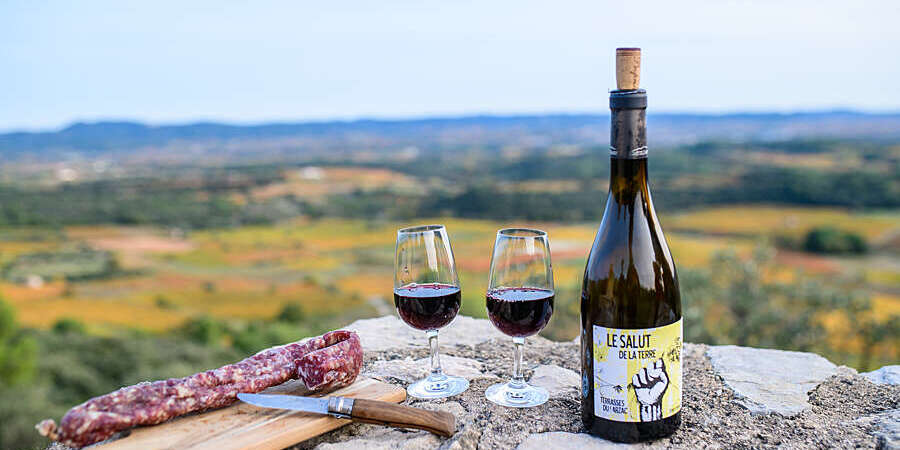wine, the fermented juice of the grape. Of the grape genus Vitis, one species, V. vinifera (often erroneously called the European grape), is used almost exclusively. Beverages produced from V. labrusca, the native American grape, and from other grape species are also considered wines. When other fruits are fermented to produce a kind of wine, the name of the fruit is included, as in the terms peach wine and blackberry wine.
The spread of viticulture
Vitis vinifera was being cultivated in the Middle East by 4000 BCE and probably earlier. Egyptian records dating from 2500 BCE refer to the use of grapes for wine making, and numerous biblical references to wine indicate the early origin and significance of the industry in the Middle East. The Greeks carried on an active wine trade and planted grapes in their colonies from the Black Sea to Spain. The Romans carried grape growing into the valleys of the Rhine and Moselle (which became the great wine regions of Germany and Alsace), the Danube (of Romania, Serbia, Croatia, Hungary, and Austria), and the Rhône, Saône, Garonne, Loire, and Marne (which define the great French regions of Rhône, Burgundy, Bordeaux, Loire, and Champagne, respectively). The role of wine in the Christian mass helped maintain the industry after the fall of the Roman Empire, and monastic orders preserved and developed many of the highly regarded wine-producing areas in Europe.
Following the voyages of Columbus, grape culture and wine making were transported from the Old World to the New. Spanish missionaries took viticulture to Chile and Argentina in the mid-16th century and to Baja California in the 18th. With the flood of European immigration in the 19th and early 20th centuries, modern industries based on imported V. vinifera grapes were developed. The prime wine-growing regions of South America were established in the foothills of the Andes Mountains. In California the centre of viticulture shifted from the southern missions to the Central Valley and the northern counties of Sonoma, Napa, and Mendocino.
British settlers planted European vines in Australia and New Zealand in the early 19th century, and Dutch settlers took grapes from the Rhine region to South Africa as early as 1654.
The introduction of the eastern American root louse, phylloxera, seriously threatened wine industries around the world between 1870 and 1900, destroying vineyards almost everywhere that V. vinifera was planted but especially in Europe and parts of Australia and California. To combat this parasite, V. vinifera scions (detached shoots including buds) were grafted to species native to the eastern United States, which proved almost completely resistant to phylloxera. After the vineyards recovered, European governments protected the reputations of the great regions by enacting laws that allotted regional names and quality rankings only to those wines produced in specific regions under strictly regulated procedures. Today, newer wine-producing countries have passed similar regulations.

Enology: scientific winemaking
Prior to the 19th century little was known about the process of fermentation or the causes of spoilage. The Greeks stored wine in earthenware amphorae, and the Romans somewhat extended the life of their wines with improved oaken cooperage, but both civilizations probably drank almost all of their wines within a year of vintage and disguised spoilage by adding such flavourers as honey, herbs, cheese, and salt water. Wooden barrels remained the principal aging vessels until the 17th century, when mass production of glass bottles and the invention of the cork stopper allowed wines to be aged for years in bottles.
In the mid-19th century the French chemist Louis Pasteur and others explained the nature of fermentation and identified the yeasts responsible for it. Pasteur also identified the bacteria that spoil wine and devised a heating method (later called pasteurization) to kill the bacteria. Later in the century, methods were developed for growing pure strains of specific yeasts in culture. Advances in plant physiology and plant pathology also led to better vine training and less mildew damage to grapes.
Mechanized innovations in the 20th century have mainly contributed to quality control. Stainless steel fermentation and storage tanks are easily cleaned and can be refrigerated to precise temperatures. Automated, enclosed racking and filtration systems reduce contact with bacteria in the air. Beginning in the 1960s, the use of mechanical grape harvesters and field crushers allowed quick harvesting and immediate transfer to fermentation tanks.





